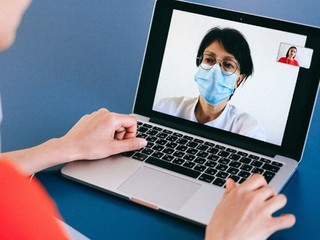Nao Medical adopts AI medical coding software XpertDox
Nearly $265B in claims are denied every year because of the way they're coded
Read more... Now that we're back to normal in terms of healthcare access, meaning that people can see their doctor in person again and don't have to rely on telehealth and virtual care to get care, we're also finally getting a clear picture about whether or not those services, which exploded during the pandemic, will still have a place in the healthcare system going forward.
Now that we're back to normal in terms of healthcare access, meaning that people can see their doctor in person again and don't have to rely on telehealth and virtual care to get care, we're also finally getting a clear picture about whether or not those services, which exploded during the pandemic, will still have a place in the healthcare system going forward.
All signs pointing to telehealth not only being here to stay, but that it will also be growing very, very quickly.
According to analysis from Vantage Market Research, the global telehealth market is expected to grow over 400% in the next few years, from $40.52 billion in 2021 to $200.53 billion by 2028, at a compound annual growth rate (CAGR) of 38.9%. This coincides with a survey released this week that found that found that over 90% of Americans used telehealth services in the last year, and that 90% enjoyed their experience.
This coincides with a survey released this week that found that found that over 90% of Americans used telehealth services in the last year, and that 90% enjoyed their experience.
As for who is most likely to use telehealth, a report from the CDC in October found that it is especially popular among women, American Indians, and older people.
The largest percentage of telemedicine usage came from the non-Hispanic American Indian or Alaska Native community, 40.6% percent of whom used it; that was followed by 39.2% of Non-Hispanic whites, 33.1% for non-Hispanic Black people, 32.8% among the Hispanic population, and 33% for non-Hispanic Asians.
The percentage of adults who used telemedicine also increased with age: 29.4% those aged 18 to 29 used these services, compared to 35.3% of those aged 30 to 44, and 38.9% of those aged 45 to 65. It was the 65 and over crowd who was most likely to use telemedicine, with 43.3%.
That report aso found that usage of the technology increased with education level and income.
Another recent survey found that patients and physicians see high value from telehealth, though that is not universal: nurses and staff seeing more work as a result of these technologies.
A majority of respondents from practice-based physicians said telehealth has increased the workload of their support staff, and 28% said it creates more work for nurses, while 35% of hospital executives, said telehealth increases the workload for support staff, and 30% said it requires nurses to do more work.
So, if patients and doctors are using it and like it, what could actually stand in the way of telehealth? According to Vantage, the biggest risk is the potential for fraud.
"Healthcare fraud is an important consideration in the area of telehealth and telemedicine practices. There are numerous ways a patient or a physician can be victimized—for instance, the physician’s name and accounts can be used to receive payments from the insurance company, or non-eligible or non-listed institutional providers can practice improper coding and billing for false claims," the company wrote.
(Image source: mhealthintelligence.com)
Nearly $265B in claims are denied every year because of the way they're coded
Read more...Most expect to see revenue rise, while also embracing technologies like generative AI
Read more...The market size for 2023 was $10.31 billion
Read more...

